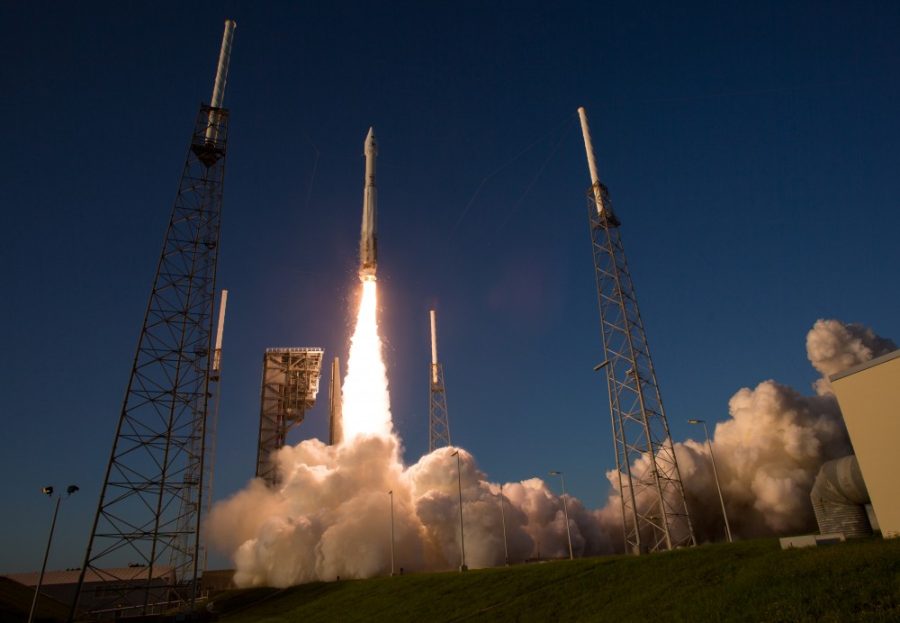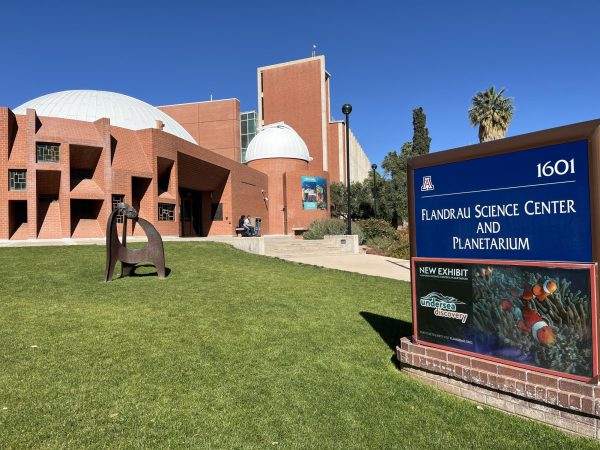Today, the University of Arizona-led OSIRIS-REx mission made history when it collected a sample from asteroid Bennu. The sample was collected from Nightingale’s crater. This process was not easy since the spacecraft needed to dodge rocky hazards.
Dante Lauretta, OSIRIS-REx principal investigator and UA professor of planetary science and cosmochemistry, explained in the NASA livestream, “from a science perspective we’re really answering some fundamental questions: Why are we here? Why is Earth a habitable planet? How did the origin of life occur?”
Lauretta also explained in the NASA livestream that asteroid Bennu is considered a hazardous asteroid. It could possibly come in contact with Earth in 150 years and create a natural disaster. He explained that another aspect of the mission is to learn more about the impact risk that Bennu poses to the Earth. It has a one-in-2,700 chance of impacting Earth.
Lauretta explained that there is an 18.5-minute delay between the spacecraft and Earth. This means that all the data they get are actually from the past.
Since there is a very low data rate, the images from the spacecraft will not be available in real time. Lauretta stated that the images should be in by tomorrow.
Before the sample was collected, the OSIRIS-REx spacecraft performed its Checkpoint maneuver. The spacecraft adjusted its position and speed, and began descending toward the surface of the asteroid. The position uncertainty was at 0.4 meters before the Checkpoint burn, but it bumped up to 1.6 meters after the Checkpoint burn.
The spacecraft then executed the Matchpoint maneuver, where it slowed its descent and targeted a path to match the asteroid’s rotation. The position uncertainty during the Matchpoint burn was at one meter.
The next crucial part was when OSIRIS-REx crossed the five-meter mark. It successfully made it through that mark and began the Touch-And-Go maneuver.
At 3:12 p.m., the spacecraft attempted the TAG maneuver. The spacecraft began to descend to the surface of the asteroid. It touched down for about 10 seconds and fired one of its three pressurized nitrogen bottles. The gas then agitated and lifted Bennu’s surface material that was then caught in the spacecraft’s collector head. The spacecraft fired its thrusters to navigate safely away from the asteroid.
RELATED: Tohono O’odham Nation donates money to Arizona universities for COVID-19 research
It will take over a week in order to determine whether they were able to collect a good sample of 60 grams. If they did not collect enough of a sample, they will plan for a second sampling attempt next year.
If they collect enough of a sample, the spacecraft will begin its journey back to Earth. OSIRIS-REx is currently 200 million miles from Earth and is set to return to Earth in 2023. More data and information to come in the following days.
“History was made tonight,” Lauretta said.
Follow Jillian Bartsch on Twitter









